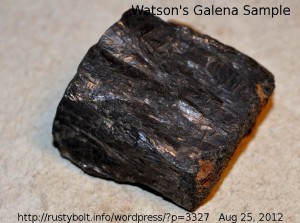Bespoke – The experimenter sometimes may have a difficult time obtaining parts. In a pinch, he may be able to make his own parts. This generally applies to passive components such as capacitors, inductors, resistor, but on occasion may extend to active components too.
Coils – Most of use who have built Joule Thiefs are familiar with homemade components. Yeah, we start with a bare toroid core and some wire, and wind our own coil. Or should I just call it hand-wound? I didn’t make the wire or core. But I’ve made JT coils out if 16 feet (5 meters) of telephone wire, wound on a AA cell, which is then removed and the ‘donut’ of wire is tied or taped to hold it together. The core is an air core.
I’ve read about how the old timers made their own crystal radio sets. They used an empty Quaker Oatmeal box for the coil form, and wound thin insulated wire on it. They then made their own capacitor by putting sheets of aluminum foil between the pages of a book. Varying the weight on the book changed the capacitance. And the detector, too, can be made from a small piece of galena crystal (more about this below). Except for the headset, this makes the crystal radio set the most homemade of any electronics project.
Capacitors – The Tesla Coilers need high voltage capacitors for their TC, and that can be very expensive. Some coilers make their own salt water capacitors from beer or beverage bottles, aluminum foil and a tub of water with salt. And of course, their coil is homemade – or hand wound. Google for Tesla Coil and you’ll get tons of hits.
I’ve made a ‘gimmick’ capacitor for my FM wireless microphone. I needed a 4.7 pF capacitor between the emitter and collector of the oscillator, and low values in the few picofarads are uncommon. I took two 2 inch (100mm) lengths of 24 AWG (.5mm) solid insulated telephone wire and twisted them together tightly. The result is a capacitor that’s about 1.5 to 2 pF. Two or three of these in parallel made a 4 pF capacitor. These also work for tuning the tank circuit in the collector. Of course the tuned tank coil, too, is made by hand.
Resistors – I’ve done the experiment where the experimenter draws a line on a piece of paper with a pencil, then measures the line’s resistance. The graphite in the pencil is the carbon resistance element.
Old timers had resistors that were considerably bigger than the tiny 1/4 watt ones we have today, which are a thin film of carbon on a ceramic substrate. Those old ones had a body that was solid carbon, much easier to work with. Back then they often found that they needed a resistor that was higher than what they had. Their solution was to file a groove in the side of the resistor. This reduced the cross section of the body, so less carbon meant more resistance.
 I’d like to explain the galena crystal in the crystal radio. Today, a silicon diode costs only a few pennies and will work for a detector, but it takes a higher voltage signal to conduct compared to a germanium diode. The germanium diodes are no longer available, so about the only alternative is a high frequency Schottky barrier diode, which are uncommon and hard to obtain. Some crystal radio fans like to use the galena crystal, not only because it conforms to the original crystal radio, but they like to be able to adjust the cats whisker until they find a ‘sweet spot’ where the signal is loudest.
I’d like to explain the galena crystal in the crystal radio. Today, a silicon diode costs only a few pennies and will work for a detector, but it takes a higher voltage signal to conduct compared to a germanium diode. The germanium diodes are no longer available, so about the only alternative is a high frequency Schottky barrier diode, which are uncommon and hard to obtain. Some crystal radio fans like to use the galena crystal, not only because it conforms to the original crystal radio, but they like to be able to adjust the cats whisker until they find a ‘sweet spot’ where the signal is loudest.
The galena crystal is not the only homemade detector. The old timers used to use a razor blade, with a cat’s whisker contacting the blueing on the blade, which had rectifying properties. They called these foxhole radios, because the soldiers had to make do with the limited resources available.











